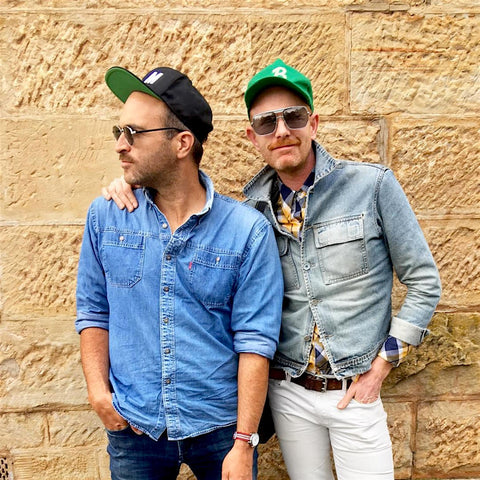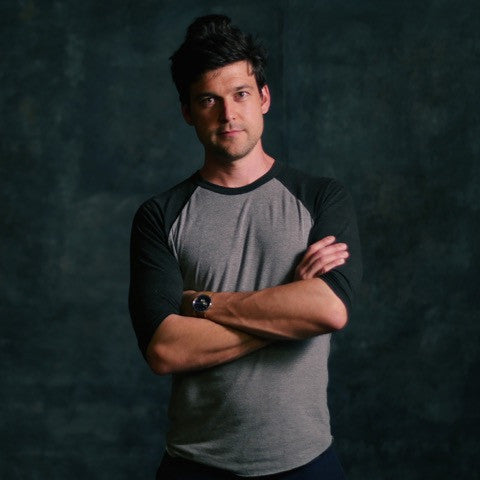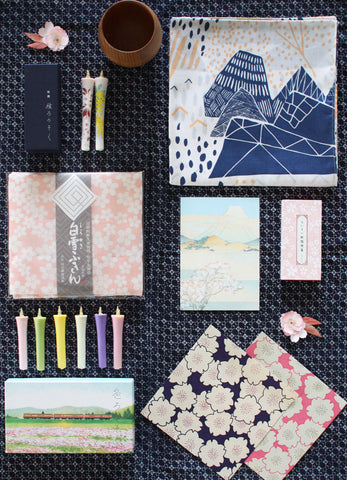We love signs at The Boroughs, so we’ve invited The Gents to exhibit images from their recently released book, Signs of Australia.
The Gents, for those who are unfamiliar with their work, are the talented team of Brady Michaels and Dale Campisi. Together they write books, contribute to newspapers and magazines, art direct, photograph, activate spaces and manage events.

Dale Campisi and Brady Michaels
The Gents spend part of their lives in the idyllic surrounds of Tasmania, in their recently completed home at Hunting Ground, and the rest in Melbourne. Here they lead tours of the city and its significant buildings and contribute to the city’s culture, through retail ventures and space activation.
Like The Boroughs crew, The Gents share a love for place and community. In all their work there’s a strong reference to the unique attributes of a particular place, the community that supports it and the culture therein.
We all met in 2010 when The Gents were involved in Melbournalia, a very successful Pop-Up, space activation project featuring Melbourne made and designed products. At that stage, The Gents were working as publisher/editors with an independent, boutique-publishing house, Arcade.
Alasdair: Tell us about Arcade and how you came to be involved in publishing.
Dale: We’ve always been interested in telling stories, and Melbourne’s rich history is a great source of inspiration. Brady was working as an artist and graphic designer, and Dale as a writer and editor, and we realised we had the combined skills to make a book.

Arcade books ~ Chasing the Rainbow by Lisa Lang, Making Modern Melbourne by Jenny Lee, Madame Brussels by LM Robinson and MacRobertsonland by Jill Roberston
We formed Arcade with another couple, Rose Michael and Peter Daniel, in 2007. We published thirteen pocket books about Melbourne's past, which started with EW Cole – the eccentric visionary bookseller and publisher of the nineteenth- and early twentieth century. (He’s most famous for his Cole's Book Arcade, which was on Bourke Street opposite where Myer is now, and for publishing Australia’s biggest selling kid’s book, Cole’s Funny Picture Book, which was in print for over 100 years and sold more than a million copies in that time.)
We discovered Cole’s amazing story through our pal, Lisa Lang. She wrote our first “little book” – Chasing the Rainbow – and then went on to write the award-winning Utopian Man, a fictional representation of his life. And shortly after Arcade called it a day, we created a new version of the classic Cole’s Funny Picture Book with Hardie Grant Books, renamed Cole’s Funny Little Picture Book. So we have a lot to thank EW Cole for! He was a great inspiration to us and still is.

Coles Funny Little Picture Book
A: How did you move from publishing to retailing?
D: When we started Arcade, the publishing industry was experiencing a real rough patch due to competition from other forms of entertainment, bookstores were closing en masse – particularly the majors – and there was a lot of fear about e-books killing the print book. We took that as a challenge, presenting our stories as “events”: in addition to publishing each book, we hosted walking tours, fashion parades, salons and even pop-up bars as a way to connect with new audiences and create community around our business of sharing history.
The success of our events highlighted that we there’s more than one way to tell a story – and sometimes the margin is higher too!
A: At Melbournalia, The Gents were responsible for the visual identity, consumer engagement/marketing and the event program. How did it all come about?

Melbournalia identity MKI designed by Brady Michaels
D: Melbournalia was a great business to conceive and establish. The four originating partners each had important skills to contribute to its success. Certainly, there was a gap in the market for a local goods and souvenir store: Melbournians love Melbourne, and the city has a long history of making and manufacturing. The creation of local icons was also already in its ascendancy in the early 2010s, so we had a good starting point.
But when we entered retail it too was experiencing a rough patch, and we didn’t have any angel investors or deep capital investment. We knew we needed to do something different to capture people’s attention and then lace it with a healthy dose of FOMO. So we launched with four simultaneous pop-ups (in a warehouse, a cafe, an office building and a busy coffee joint).
A: Did you respond to each of locations in a different way and did this influence your marketing?
D: Each store had a slightly different offering which encouraged customers to visit all of them, which many did. It became like a mini self-guided walking tour of the CBD and both tourists and locals loved that. That approach kept our overheads low and allowed us to test different markets across the city. It was also crazy fun swapping stories when we met up at the Home store at the end of each day. That sense of fun translated into our customer service.

Melbournalia Home ~ Franklin Street Melbourne 2011
A: What drew the public to Melbournalia, and who was your audience?
Brady: The events program was all about reaching different types of people and injecting fun into retail. Crucially, everything we sold had a story that could be told in different ways. One week we’d host a book launch or makers talk, the next we’d set fire to a Christmas pudding and learn about what Melbournians ate in the nineteenth century. We did pom-pom workshops and sessions on growing native plants. We always remained open to new ideas.

Dale looking the part at Melbournalia @ The Queen Victoria Market in 2012
The audience was always locals and visitors alike: people who are interested in place, people who love local, people looking for the real story of a place. Our customers loved that we knew the makers and that they could meet them too, that our products were designed and made locally, and that their dollars supported small business.
The visual identity of Melbournalia was key to introducing ourselves to our potential customers from the outset, and the design evolved from the original pop-ups (which had a postal theme, as we had an in-store postal service!) to a more refined and timeless identity which (we think) still looks great today. The aim was to make our identity sleek and design-y (to reflect the design-led nature of most of our products), but friendly and accessible enough to appeal to a wide audience. Pops of bright colour always help!

Melbournalia identity MK II designed by Brady Michaels
A: What made it so special?
B: We think the concept was really strong and there was a lot of love shared between us, our customers and our suppliers. The ‘local love’ vibe was palpable.
It was about this time that The Gents started spending part of their time in Melbourne and Hobart.
A: What projects did you work on in Tasmania?

Railway Roundabout Fountain ~ Hobart
D: Brady grew up in Hobart, so we’ve been visiting Tasmania regularly since we met in 2002. Our first project was writing a guidebook (the first that we know of) to the city for Hardie Grant Books. We also worked on Tasmanian arts and culture magazine Island for a time (myself as Editor of four issues and Brady as Art Director of 12 issues), and also wrote about 30,000 words for the updated discovertasmania.com.au website. I also developed and produced Open House Hobart: an architecture festival which grew to an audience of over 15,000 in 2017.
A: You’re both very involved in the visual/creative and social culture of Tasmania, tells us about the projects you’re currently working on?
D: In 2018 we are very focused on our property Hunting Ground. We filmed the restoration for a TV show which will air on the ABC in August. Hunting Ground has a chapel, which we’re launching as a solar-powered event space. Our first event is a native high tea and presentation with author and wild/native foods expert Reese Campbell. We’re also lucky to have an ex-MONA chef just across the road! We’re also exploring new photography books projects with our publishers and hope to undertake more epic road trips to get to the heart of this fascinating country in which we live.

The Gents' property Hunting Ground in Tasmania's southern midlands
A: How did Signs come about?
B: We were approached by our publisher New South Books to develop a book concept around ghosts signs: vintage faded signs that are often found on old buildings. There was a proven interest in the topic in America and an emerging interest in ghost signs here in Australia, particularly Melbourne. It was a topic that interested us too, as we are particularly focused on history and the built environment.

A: When did you start photographing signs?
B: I had been photographing old signs for years before the Signs book project came about, especially in Melbourne as part of my Grouse Melbourne photography series. It was one aspect of the built environment that I thought revealed so much about the city. The advertising, the outdated products and services and the different styles of typography were all fascinating to both of us, like layers of a city that could be explored to reveal more behind the surface. So the prospect of travelling all over Australia in search of signs was simply too good to pass up!

Broken Hill ~ New South Wales
A: Tell us about the process, you travelled 40,000 kms to create this book!
B: Yes, we sure covered a lot of ground! Most of it was done on the road, which is kind of essential to really get a sense of how huge and diverse Australia is. We did it in four major roads trips (Dale still had a job in Hobart, so a gap year wasn’t an option), each of which took 2-3 weeks. With the time limitations, each trip had to be really well-planned (I spent a lot of time on Google maps!), with just enough flexibility to take side trips of the main route when curiosity called. We literally raced from town to town with only a small window of time to stop and shoot in each place, no matter the weather or light conditions. It was basically drive-stop-shoot ... repeat! Dale would drop me off at one end of town, driving to the other end (often via the local bakery!) while I walked the length of the town, shooting as I went. We’d also walk or drive down side streets, back streets and laneways in search of hidden gems. The big cities required much more time and effort - I would stay for at least a week, using public transport to get around and often walking over 30km a day to explore the areas I thought would be rich in vintage signs: inner suburbs, outer suburbs, industrial areas etc. It was hard work but great exercise! I photographed thousands of signs along the way, 500 of which made it into the book, which I also designed. New South kindly gave me complete creative control over the selection and design process. So, with photo editing, design and layout to be done, the Signs journey continued in my studio in Hobart long after the travel ended. Going through all of my photos brought back so many wonderful memories of our adventures!
A: Signs is a selection, would you like to publish Volume 2?
B: Sure, there’s probably enough content for a 10 volume box set! Of course, from a publishing perspective, it’s all dependent on how well the first book does, so fingers crossed it resonates with a broad audience.
Which are your favourite images in the book and why?
B: I love them all for different reasons: the memories of a particular place, the beautiful typography and design of a sign, the light and weather conditions that I was lucky to experience at a certain time. But there are images that I feel are particularly strong, maybe because they are a combination of all of the above. My absolute favourites would have to be ‘Broken Hill Ice & Produce’ sign (for its mid-century elegance, clear blue sky and light/shadows), the Shelley’s Famous Soft Drinks (for its beautifully faded signage and the classic Australian milk bar it is attached to), the Skipping Girl, Dandy Pig and Pink Poodle neons (all heritage listed and rightly so), the Dingo Flour sign in Fremantle (it’s a WA icon and several storeys high to boot!), and the Kevin Corby Chemist sign in Hobart, mostly because it’s the first sign that made it into my visual memory bank. As a bright-eyed little kid from the Huon Valley, seeing this sign on Macquarie Street - the main road into town from the Huon - was always an exciting moment. It may as well have flashed in its bright neon letters ‘welcome to the big smoke, boy!’.

Surfers Paradise ~ Gold Coast ~ Queensland

Kevin Corby ~ Hobart ~ Tasmania
Signs of Australia opens at The Boroughs, March 22nd at 6.30 pm.












































